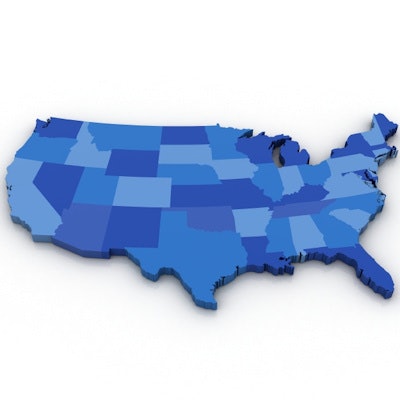
It's not just rural areas that are susceptible to disparities in screening mammography, but cities too -- with metropolitan areas in New England having the highest rates of mammography use, while cities in the Mountain region have the lowest, according to a study published August 20 in Radiology.
The findings illuminate a previously unexamined research question because prior studies have concentrated on differences between rural and urban areas in mammography screening use rather than screening mammography in cities, wrote a team led by Dr. Eric Kim of NYU Langone Health.
"Although previous studies have focused on rural disparities in the use of screening mammography, city-level use throughout the United States has not been well evaluated, even though more than 30 million women live in the 500 largest cities," the team wrote.
To investigate disparities in screening mammography use at the city level and identify factors that could affect urban screening mammography, Kim and colleagues conducted a study that included data from the American Community Survey and the Robert Wood Johnson Foundation 500 Cities Project, which incorporates screening mammography utilization information from the Behavioral Risk Factor Surveillance System (BRFSS).
The researchers evaluated the use of screening mammography at the city level by census region and assessed the impact of the following factors on screening use: population size, health-related variables such as the Pap test, income variables such as median household income and health insurance, and race.
The team found the overall mean city-level screening mammography use rate was 77.7%. The highest utilization was in coastal cities, with the highest overall use in New England (82.7%) and the lowest overall use rate in Mountain states (73.6%).
| Overall screening mammography use rate among cities by census region | |
| Region | Use rate |
| New England | 82.7% |
| South Atlantic | 79.8% |
| Pacific | 78.8% |
| East South Central | 78.7% |
| West North Central | 77.5% |
| East North Central | 76.7% |
| Middle Atlantic | 75.4% |
| West South Central | 75.4% |
| Mountain | 73.6% |
The group also found the top five strongest predictors of higher than average utilization included the following:
- Pap test use
- Higher household income
- Percentage of Asian residents
- Use of other preventative services
- Having private insurance
The study findings show that disparities in healthcare preventive service utilization are not caused by only differences in rural and urban provider resources, the group wrote.
"Although the literature emphasizes rural screening disparities, it is important to recognize that disparities also exist across large cities without the same physical barriers to screening," the team concluded. "[Identifying] predictors of uptake and recognition of the importance of linking breast cancer screening to other preventive services may help target cities and populations for screening education and intervention, with the ultimate goal of improving mortality from breast cancer."




















